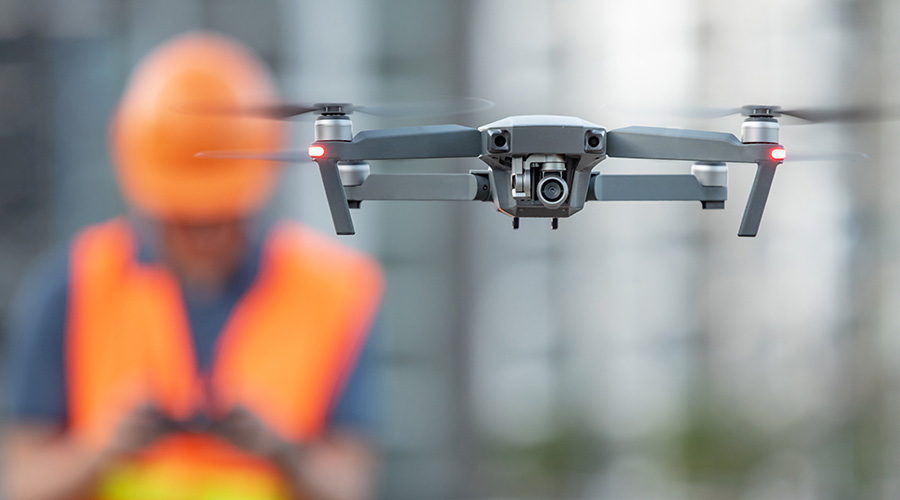Putting Pests in their Place
Integrated pest management offers managers cost-effective solutions to controlling pests inside and outside of facilities
Pests generally are not a high priority for maintenance departments — until a problem arises. Once building occupants or visitors spot unwanted pests inside or outside facilities, managers must take action.
But in too many cases, managers simply respond to complaints instead of implementing a pest management strategy ahead of time that could prevent problems from arising. Integrated pest management (IPM) uses a variety of ways to control pests using a minimal amount of pesticides, if any.
A Closer Look at IPM
IPM consists of five basic principles. They are not written in stone because different situations will require different measures, but they are applicable in most situations.
First, it is essential to inspect a facility to determine how pests enter, where they hide and what they feed on. This information is important in prescribing a good IPM program.
Next, inspectors must identify the pest in order to control or eradicate. Never guess at an identity, or control measures might not work. If unsure, take a specimen to the local cooperative extension service or a university entomologist for positive identification. It is particularly important to know the species of ant involved.
Next, ensure that occupants follow sanitation procedures, which are a vital element in deterring pests, as are maintenance tasks such as repairing cracks in foundations, installing weather-stripping and door sweeps, and removing ground litter near the building.
Next, inspectors should use traps, which are available for most pests and enable workers to monitor and control pests with a minimal use of pesticides. Baits also are available for a variety of pests, negating the need to spray pesticides.
Finally, managers should consider the use of liquid and aerosol pesticides but only as a last resort and when selected carefully for effectiveness and safety.
Planning and Preparation
The development and management of a pest control strategy is just as important as its execution. Managers should consider these steps:
- Adopt a policy that minimizes the use of pesticides, which can lead to cancer, adverse reproductive and developmental effects, and other known or suspected health hazard problems.
- Develop an IPM program that prioritizes pest prevention and non-toxic methods of pest control.
- Halt routine pesticide applications.
- Allow only trained personnel to apply pesticides on school grounds and in school buildings.
- Keep records of all pest management activities, including pest, host, pesticide, and control strategy. Make this information available to the public.
- Develop a plan for notifying building occupants and visitors before, during and after applying pesticides.
- Establish a more naturalized landscape that minimizes the need for weed control.
Pest Prevention
Pest-proofing a facility narrows the chances of occupants seeing a pest inside a building. The following steps can help:
Check outside doors. If light comes in from under a door or if a piece of paper fits under it, a bug can crawl in. Install door sweeps or thresholds to prevent bugs from coming in under doors.
Check for openings around pipes and wires that penetrate the building foundation, and seal them. These are excellent places for ants and wasps to enter.
Keep bricks, wood and other items under which bugs can hide away from the foundation of a facility.
Plug up the ends of the pipes on playground equipment to prevent wasps from nesting in them. This step is especially important in childcare facilities.
Do not leave outside lights on more than necessary. Lights attract bugs and animals that eat bugs.
Cut back any branches on trees or shrubs that touch the facility. Ants often use the limbs of trees and shrubs to gain access to buildings.
In general, cleanliness is very important in successful pest management because bugs like untidiness and filth. They do not do well in clean environments.
Solutions, Pest by Pest
Different types of pests require specific tactics to keep them under control. Managers might consider these steps against the following types of pests:
American cockroaches. Boric acid baits are effective against these cockroaches.
Oriental cockroaches. Boric acid baits are effective against them, as is loose duct tape with the sticky side up.
German cockroaches. Cockroach bait stations work well in conjunction with pheromone traps.
Household ants. Ant bait stations are effective against most species of household ants.
Carpenter ants. There are effective baits on the market.
Spiders. Vacuuming up spiders and using glue boards for trapping them are proven methods.
Scorpions. Door sweeps on doors will deter scorpions, and glue boards will help catch them.
Centipedes. The same methods used for scorpions are applicable for centipedes.
Pantry pests. Sanitation and pheromone traps for some species will help control pantry pests.
Carpet beetles. Diatomaceous earth is helpful. Carpet beetles also are attracted to soiled socks and American cheese. Cleanliness helps control these insects, as they live very well in dust balls.
Fleas. Diatomaceous earth and electric flea traps work well on fleas.
Lice. Coconut oil shampoo is effective.
Bed bugs. Placing diatomaceous earth in their hiding places works well.
Mice. Curiosity traps are the best and most humane method of mouse control. Captured mice can be released.
Subterranean termites. Termite baiting systems are excellent for these termites.
Tackling Turf
IPM for turf and ornamentals is a more complicated process. The first thing managers must do is positively identify the potential pest. Managers then will have to determine whether or not it is causing significant damage or has the potential to do so.
Managers and their staffs also have to determine the best method for treatment and the most environmentally safe. The use of pesticides is not necessary to control many types of pests. For example, pheromones are useful in mass trapping and disrupting mating for some pests — some species of bark beetles and many other borers — and no chemicals are needed.
Bioinsecticides such as nematodes can help control other pests, such as white grubs, cutworms, webworms, billbugs, mole crickets, some weevils, fungus gnats and stem borers. Among the advantages of using bioinsecticides is that they do not affect birds, mammals, fish or non-target organisms.
Microbial control of some pests is another strategy. Bacillus thuringiensis is a very effective microbial control for many insect pests, particularly caterpillars and mosquito larvae. Protozoans, such as Nosema locustae, are very effective against young grasshoppers.
Occasionally, departments will have to use true insecticides. Ideally, these will be the safest products possible. Botanical insecticides — such as pyrethrum and pyrethrins, rotenone, sabadilla, ryania, nicotine, citrus oils and neem — are all effective, as are insecticidal soaps.
Richard Fagerlund is a board certified entomologist and an integrated pest management specialist for environmental services in the physical plant department at the University of New Mexico.
Related Topics:











